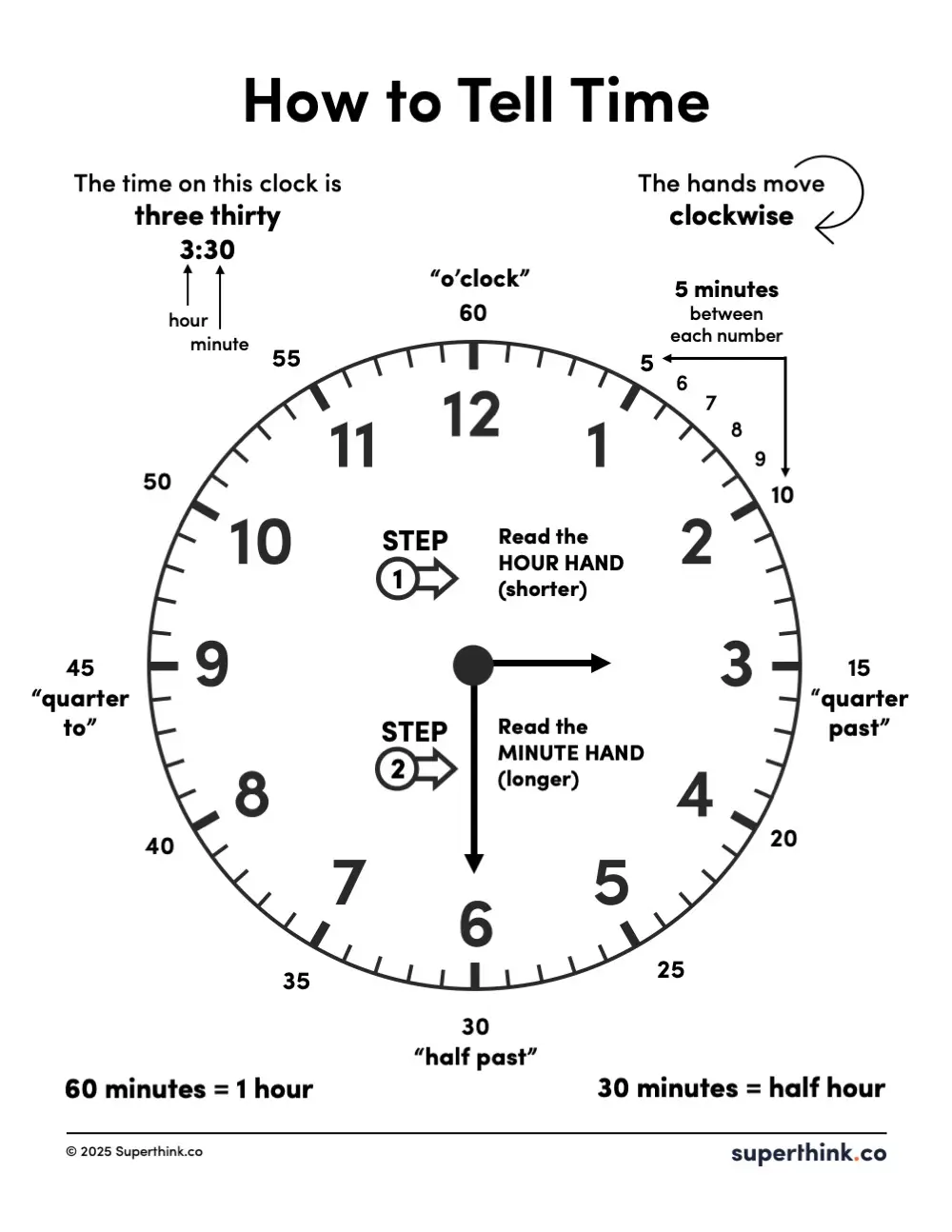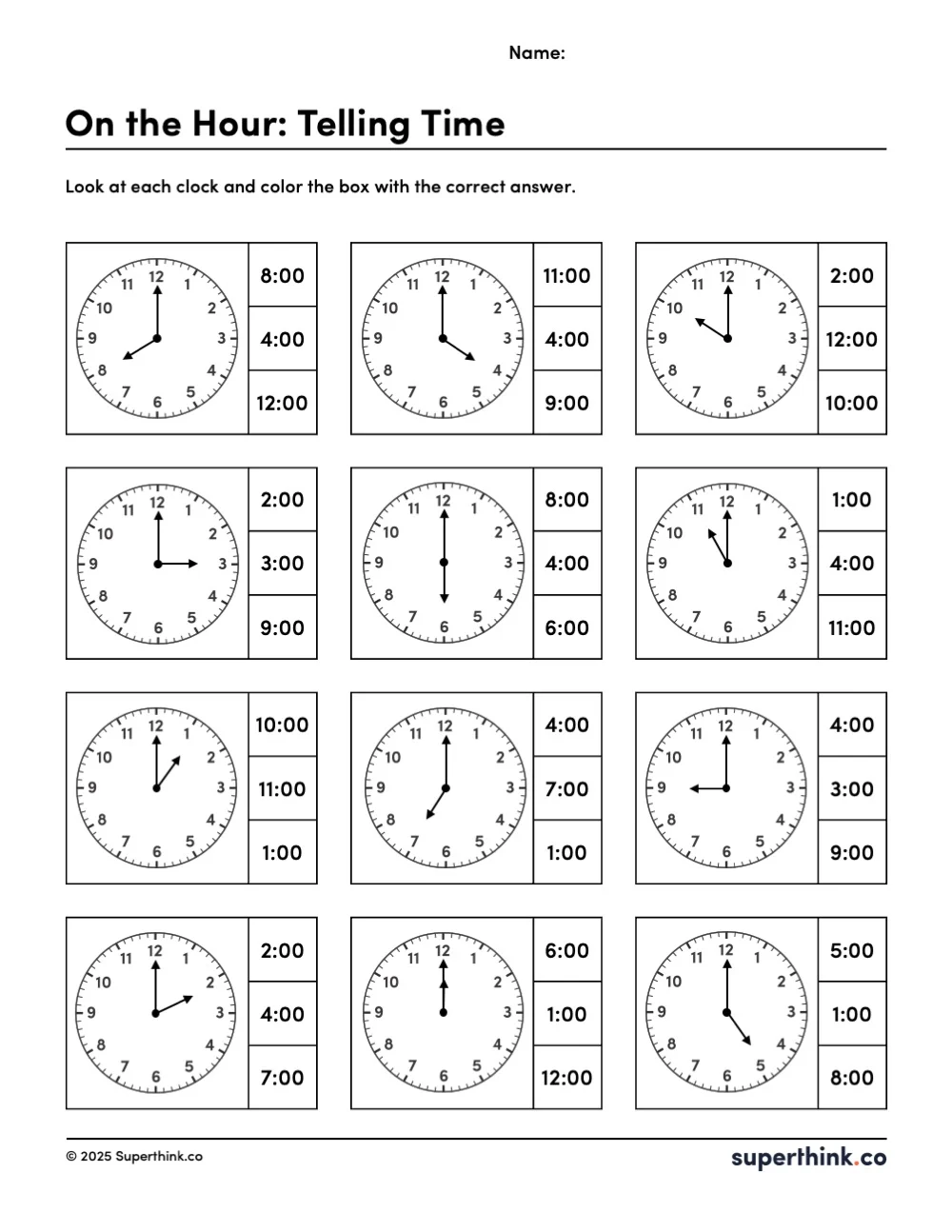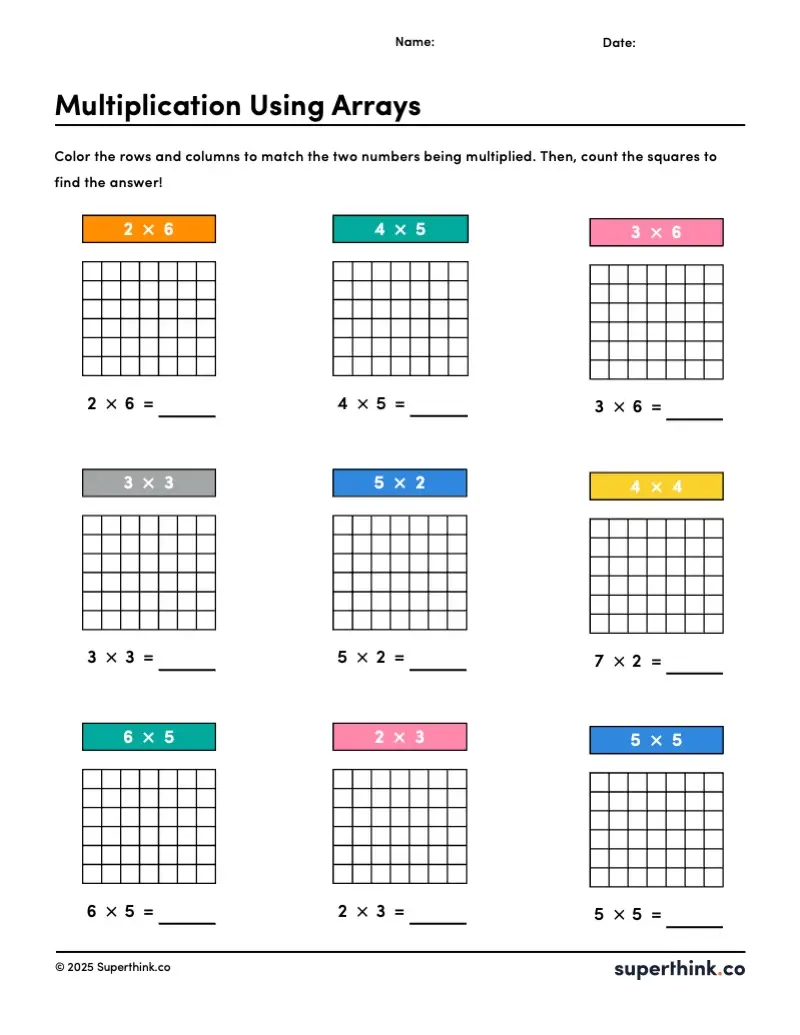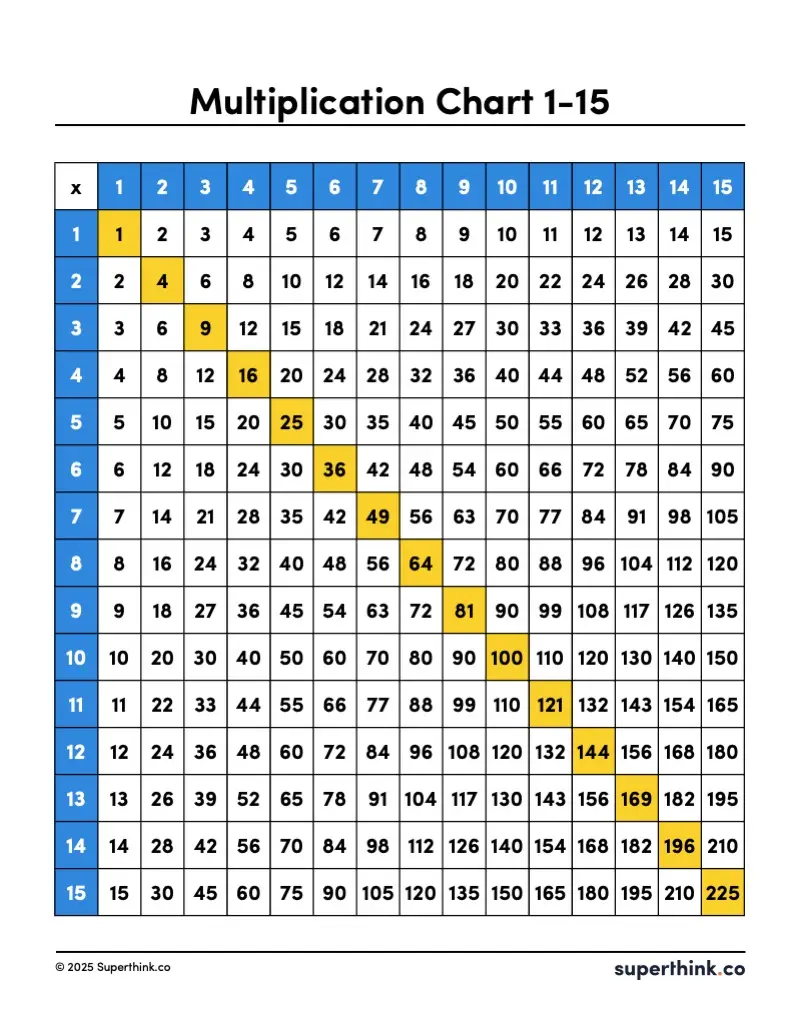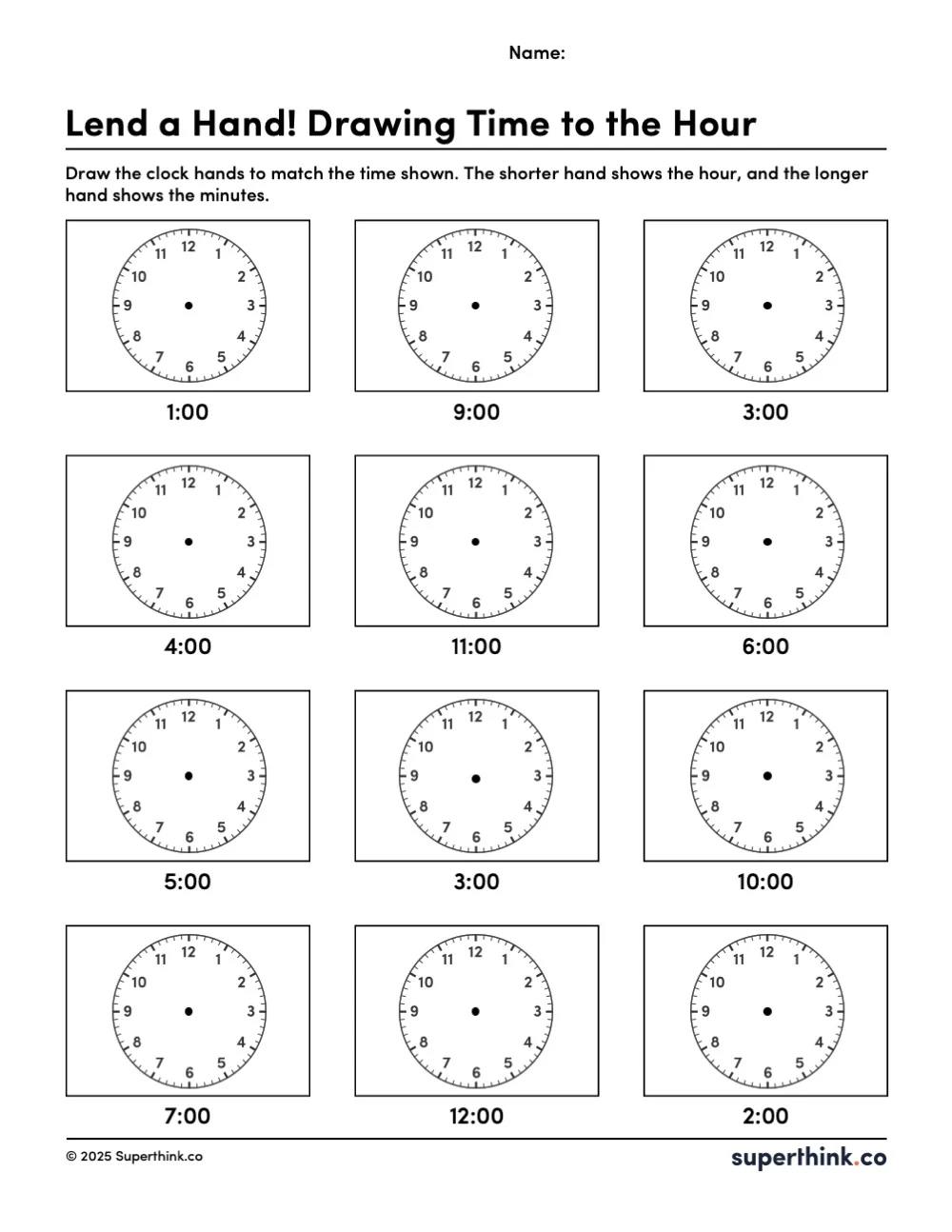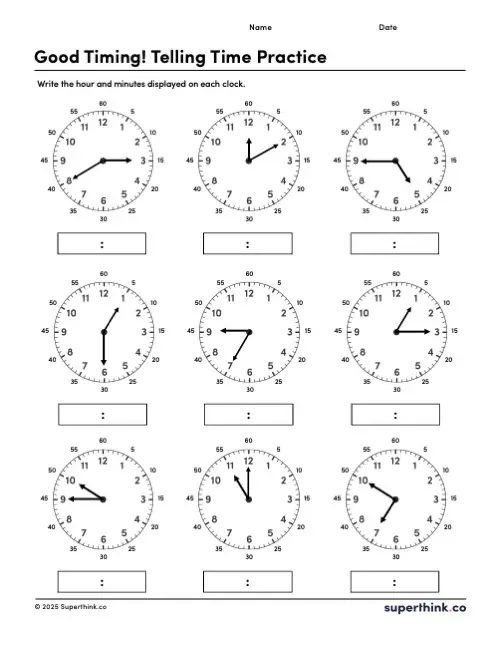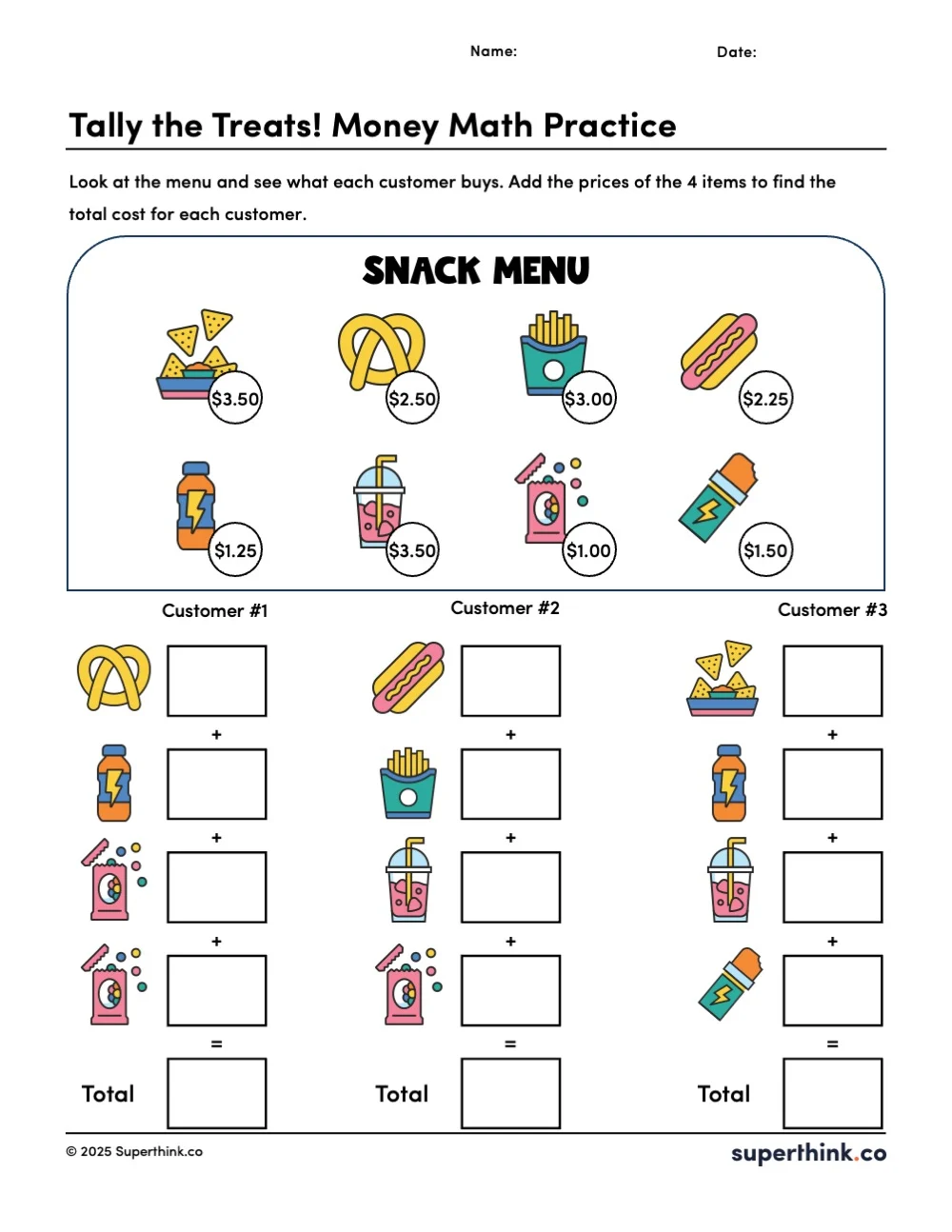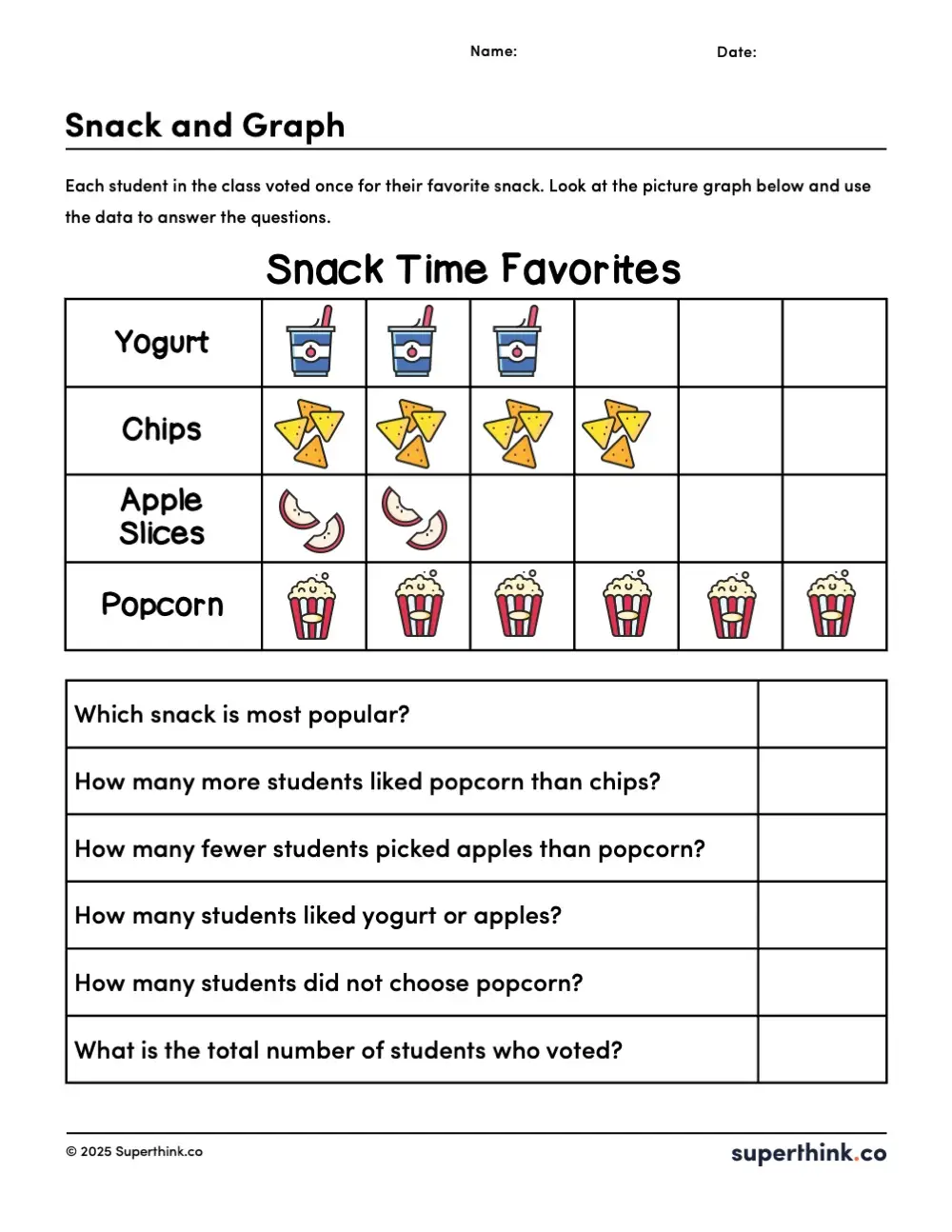Students can reference this telling time anchor chart to build confidence. This clear and well-organized worksheet features an easy-to-read clock face. Students will learn to identify the hour and minute hands and understand key time-related vocabulary, including o’clock, half past, quarter to, and quarter past.
Helping Kids Learn to Tell Time
Learning to tell time is a big part of early elementary math. It helps kids build real-world math skills, develop a sense of daily routine, and grow their independence. But for many children, reading a clock face can feel confusing at first. That’s where a visual tool like an anchor chart can make a big difference.
How to Use the Telling Time Anchor Chart Worksheet
This printable anchor chart can be used as a reference tool for students as they practice reading and writing time. Here’s how to make the most of it:
-
Introduce vocabulary using the labeled clock on the chart.
-
Point out the positions of the hour and minute hands for each key phrase.
-
Display it in the classroom or at home where students can see it while working.
-
Use it during math centers or independent practice as a reminder tool.
The chart is designed to be clear and clutter-free so kids can focus on the essentials.
Why Telling Time Matters
Telling time is more than just reading numbers on a clock. It’s a life skill. Kids who learn to tell time can better understand their routines, manage transitions, and gain confidence in how their day is structured. Understanding time also supports math concepts like skip counting, fractions, and number sense. For example, learning that a clock has 60 minutes and that each quarter is 15 minutes helps build early fraction awareness.
Start with the Basics: Hour and Minute Hands
Before jumping into tricky phrases like “quarter past” or “half past,” it’s helpful to make sure kids understand the parts of an analog clock:
-
Hour Hand: The shorter hand that tells what hour it is.
-
Minute Hand: The longer hand that shows how many minutes past the hour.
Kids often confuse the two, so be sure to point them out clearly. Our worksheet features a clean and easy-to-read clock face, perfect for identifying and labeling each hand.
Building Vocabulary Around Time
Once students can identify the clock hands, it’s time to introduce common time phrases. These include:
-
O’clock – when the minute hand is on the 12
-
Half past – when the minute hand is on the 6 (30 minutes past the hour)
-
Quarter past – when the minute hand is on the 3 (15 minutes past the hour)
-
Quarter to – when the minute hand is on the 9 (15 minutes before the next hour)
These phrases help kids move beyond just reading numbers and start understanding how time is described in everyday conversation.
Keep It Hands-On
To reinforce clock reading skills, pair the anchor chart with hands-on activities:
-
Use a magnetic dry erase teaching clock to let students set different times.
-
Ask questions like, “What time is it when the minute hand is on the 6?”
-
Have students draw their own clocks to show o’clock, half past, quarter to, and quarter past times.
Downloaded this chart? Try these other telling time worksheets:
- Lend a Hand! Free Drawing Time to the Hour Worksheet
- Good Timing! Free Telling Time Worksheet
- On the Hour: Free Telling Time Worksheet

